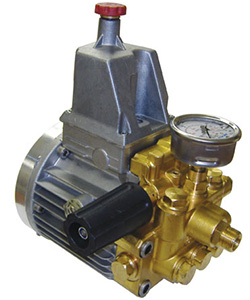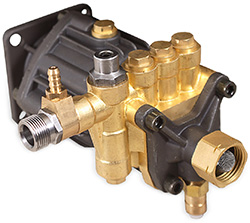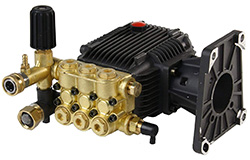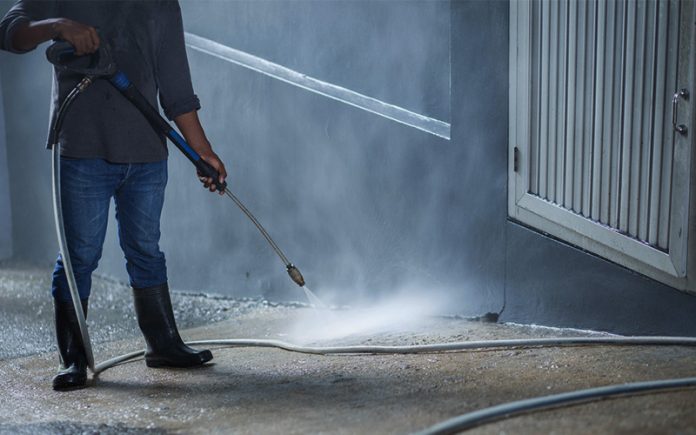We Americans usually prefer pressure washing because this is time-saving and can help save a lot of energy and water as well, making it environmentally friendly. But many of us are not familiar with the different parts of these machines. Here at Stuffoholics we think that you better be because this will help you make the most of your precious pressure washer and get amazing cleaning results. Though a pressure washer has several different parts, in this article we’ll mainly keep our focus on the various types of pressure washer pumps out there. Knowing their differences, advantages, and disadvantages will help you decide which type might best fit your intended use.
Types of Pressure Washer Pump
The pump is considered the heart of a pressure washing machine because this is the essential part that creates a high water velocity. There are basically three types of pump used for pressure washers – wobble plate, axial cam, and triplex plunger. But if we think of a broader category, we’ll find two general types of positive displacement pumps, namely rotary and reciprocating. The rotary type uses plungers and pistons while the reciprocating type uses vanes, screws, and gears.
So, wondering what category does the pressure washer pump belong to? It’s the latter that uses plunger or piston pumps to add energy to the cleaning liquid or water. However, it is also important to know the difference between the plunger and piston pumps.
In case of the piston pump, its cylinder seal is connected to the piston so the piston moves with the seal on every stroke. On the other hand, the plunger pump’s cylinder seal is at a fixed point that its piston moves through with every stroke. Also, a driveshaft that’s attached to the wobble plates helps drive the piston pump whereas it’s the crankshaft that drives a plunger pump.
Let’s now see what is there to know about different types of pressure washer pumps so you can make the most of your pressure washer.
1. Wobble Plate Pump
 Wobble pumps are an entry level pump that uses pistons and is driven by the driveshaft. The driveshaft of the pump pushes its piston back and forth and the piston sucks in and pushes out water with great force. They are generally sealed shut prior to coming out from the factory. These pressure washer pump types are known to be only 70% efficient since they have to push against the spring and the water.
Wobble pumps are an entry level pump that uses pistons and is driven by the driveshaft. The driveshaft of the pump pushes its piston back and forth and the piston sucks in and pushes out water with great force. They are generally sealed shut prior to coming out from the factory. These pressure washer pump types are known to be only 70% efficient since they have to push against the spring and the water.
- PSI and GPM
They are generally used in below 2500 PSI and below 2.0 GPM pressure washers.
- Lifespan
You can expect between 200 to 400 hours of service from wobble pumps; i.e., 2 to 3 years if used for less than 3 hours a week.
- Pros
They are capable of running dry, producing high pressure, and priming themselves.
- Cons
These pressure washer pumps parts are not replaceable because they are complex with numerous moving parts. These pumps have a lower water flow and are not so efficient in terms of performance as other types.
2. Axial Cam Pump
 Also known as swashplate pump, they are at the intermediate level and have many more benefits to offer when compared to the wobble pump type. They work almost the same way as the wobble plate pump does, except for the fact that their pistons do spin around the swashplate.
Also known as swashplate pump, they are at the intermediate level and have many more benefits to offer when compared to the wobble pump type. They work almost the same way as the wobble plate pump does, except for the fact that their pistons do spin around the swashplate.
To be exact, the swashplate strokes the piston so it can suck in water from one end and throw it out on the other end. During operation, it rotates about the same order as the driveshaft because it’s directly connected to it, allowing for larger bearings and a bigger oil reservoir as a result. Axial Cam Pump has two different versions – fixed and variable, with the variable version allowing you to adjust the swashplate’s angle whenever you need.
- PSI & GPM
Those pressure washers that fall under 3500 PSI are suitable for these types of pressure washer pumps.
- Lifespan
As mentioned before, when compared to wobble pumps, they are much better with an estimated lifespan of 500 to 800 hours.
- Pros
They are light in weight, compact in size, self-priming, and more efficient than the wobble pumps. You can also adjust the flow of water with the swash plate angle.
- Cons
Axial pumps tend to get hot during operation and take a lot of time to cool down. There are also chances of excess vibration when the pump is not well-balanced.
3. Triplex Plunger Pump
 This is suitable for professional level pumps because it’s able to tolerate very high pressure, strong in nature, and can operate hour after hour without requiring any maintenance. If we consider efficiency, this type of pressure washer pump is as much as 90% efficient and does not get so hot because it runs at a lesser RPM than a car engine. Here we mentioned the car engine because the triplex plunger pump’s setup is somewhat similar to it; i.e., it drives positive action pistons to suck up water and push it outwards with every stroke. The pistons of these types of pumps usually stroke 120° apart to ensure smooth flow over the whole revolution of the crankshaft.
This is suitable for professional level pumps because it’s able to tolerate very high pressure, strong in nature, and can operate hour after hour without requiring any maintenance. If we consider efficiency, this type of pressure washer pump is as much as 90% efficient and does not get so hot because it runs at a lesser RPM than a car engine. Here we mentioned the car engine because the triplex plunger pump’s setup is somewhat similar to it; i.e., it drives positive action pistons to suck up water and push it outwards with every stroke. The pistons of these types of pumps usually stroke 120° apart to ensure smooth flow over the whole revolution of the crankshaft.
- PSI and GPM
These pumps are commonly seen in pressure washers with more than 3000 PSI
- Lifespan
This actually depends on how carefully you maintain your pressure washer and how often you do that. Generally, you can expect its lifespan to be 10 times longer than that of an axial cam pump. These pumps also have very low maintenance costs due to their easily replaceable valves and easily accessible pump heads.
- Pros
Triplex plunger pumps are very efficient in operation and have a longer lifespan than the other two types of pressure washer pumps with a much higher pressure. They are also less prone to leaks, have stationary seals, and cool down in a short period of time.
- Cons
Since these types of pressure washer pumps are the best of the three, you will have to spend a good amount of money to acquire one.
Now that you have some idea about the three different types of pressure washer pumps available for sale from different brands, hopefully, you would be able to choose the right electric or gas pressure washer pump and your every cleaning session would provide you the desired results, whether you’re involved in the pressure washing business or just a homeowner cleaning off his house and the surrounding areas.










































